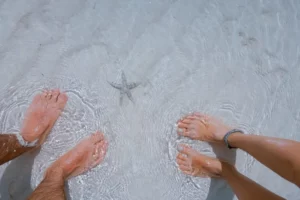This August we are exploring the Ankle and everything you need to know.
The Facts
- The first pearl of knowledge is that it’s officially known as the talocrural joint or TCJ if you want to get fancy. Its formed by the bones in the foot and leg, the tibia, fibula and talus. Functionally its known as a hinge joint, so it works like a hinge on your door, instead of opening and closing it moves up (dorsiflexion) and down (plantarflexion).
- Ligaments and muscles help stabilise this joint and permit movement. The muscles on the top of your leg work to move your ankle and foot up and the muscles on the back of the leg help bring your ankle and your foot down.
- There are two major ligamentous groups in the ankle structure, the medial and the lateral – so one group is on the inside of your ankle and the other is on the outside.
All fairly straightforward there. However, movement-related disorders and poor foot posture and biomechanics can negatively impact these structures and their designated movements. Resulting in foot, ankle and leg related injuries.
Most importantly, there is a plethora of neurovascular structure in and around your ankle and said movement disorders can impinge on these structures of your ankle. Causing nasty niggling shooting pain into your foot or leg.
Read more of our blogs for helpful tips to keep your ankles healthy and strong.
At Active Step we treat a wide range of foot and lower limb conditions. For more information regarding ankle pain or to book an appointment click here, or alternatively give us a call on 01489 881 204 or send us an email on info@activestep.co.uk, and we’ll be happy to help.
Written by Astrid Codemo, HCPC Registered Podiatrist, Active Step Health



